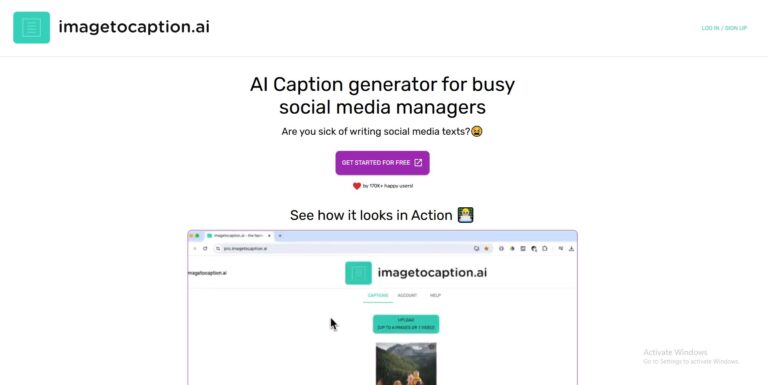Exploring Pipio: The Future of AI Video Dubbing
Being a great discoverer of implementing AI technology, I got through Pipio – which is an interesting tool. It isrevolutionizingg the face of video dubbing. The service is designed for writers, journalists, bloggers, translators, and businessmen who want to participate in the video market, sharing videos,” translating” and maintaining the tone of the original. Its enhanced, AI-driven centralized platform is expected to make content localization relatively easy in various languages with features such as accurate lip sync and better voice replication. For anyone out there planning on using multimedia as a means to bring together people from two different cultures, Pipio is nothing less than a revelation.
What is Pipio?
It is an Artificial Intelligence driven tool that can notably dub the videos in several languages while retaining high quality. Unlike other apps for dubbing, Pipio focuses on the viewer’s experience by translating the accents, tone, and emotions. The platform makes use of the latest technology for the sole purpose of both the translation feature and the speaker’s lips to match the new dialogues. For content creators teachers, marketers, and filmmakers seeking to share their content with an audience outside their home country, Pipio provides a revolutionary, effect, and easy-to-use platform.
Key Features of Pipio
1. Multilingual Support
An especially noteworthy characteristic of Pipio is the ability to use more than 40 languages. Because of this extensive language support, the site proves to be rather helpful for individuals active in the global economy or dealing with diverse language settings. Whether it is a tut, a marketing, or an entertainment video, I make sure that Pipio is translated well and appropriate for any culture.
2. Rapid Translation Process
Pipio Outperforms Ranking Time is the most important resource in content generation, and Pipio is exceptional when it comes to delivering results. The system is more efficient than traditional dubbing which may require several days or even weeks, and Pipio’s AI completes the job in minutes. Processing of documents and other activities on the platform may take some time depending on the number of users during the time of use and the fact that the site is still in a beta version, but this tool is rather effective for those who don’t have time to wait long.
3. Advanced Lip-Syncing Technology
Of course, it can be named lip synchronization which is fast becoming the best in the industry with Pipio being one of the few that has implemented the feature. The AI captures the movements of the lips of the speaker and changes them by the translation of the dialogue meaning so the viewers have an authentic and more engaging front view. This is something that none of the existing dubbing tools offer as they simply overlook it.
4. Voice Cloning Ability
The other breakthrough feature of Pipio is its voice cloning technology. The platform creates a good-quality clone of the speaker’s voice. It not only captures the tone but also the subtle nuances of accent and emotion. Thus, ensuring that the dubbed audio contains the characteristics of the speaker’s original voice, and thus, making the translated content feel very authentic and personal.
Advantages of Pipio
1. Localization
Pipio is remarkably easy to use to localize content for audiences all over the world. Multilingual support and quality dubbing allow creators to expand their reach and connect with viewers from diverse cultures. Business, education, or entertainment-related messages remain impactful and accessible because of Pipio.
2. Preservation of Video Quality
Maintain good video quality. Pipio takes proper care so that there is no loss of resolution during the dubbing process. This becomes very helpful for creators who intend to create high-quality material from a visual perspective, which also includes filmmakers and advertisers.
3. Time Efficiency
Traditional dubbing processes usually take several stages, such as script translation, voice recording, and editing, which may be very time-consuming and costly. Pipio makes this process easier and delivers dubbed videos in a fraction of the time, saving both time and resources.
4. Ease of Use
Pipio’s user-friendly interface makes it accessible to anyone, no matter the skill level. It doesn’t matter whether a user has experience in video editing or dubbing beforehand; navigating the platform becomes very effortless. This friendly approach helps reduce the threshold of access for creators, focusing on the content rather than the technicalities.
Disadvantages of Using Pipio
1. Beta Limitations
As Pipio is still in beta, there are some limitations, for example, high demand for the platform can extend processing times-the urgency of user projects can thus be frustrated. However, such problems may have an improvement as the platform gets mature.
2. Requirements for Videos
It has specific requirements for video submissions. For optimal performance, videos must meet certain criteria such as minimum duration and head and body position stability. Though these conditions ensure quality results, they may be difficult for users with more dynamic or unconventional video content.
3. Background Noise Sensitivity
To provide good dubbing, Pipio needs videos with minimal background noise or no background noise at all. Strong background noise impacts the quality of the dub, and thus creators will be required to edit the video or record in a controlled environment.
Who can use Pipio?
It is very useful for various professionals and industries. It can be used by content creators on YouTube to make their videos accessible to international audiences. Businesses can localize marketing campaigns to resonate with different cultural groups. Educators can use Pipio to translate lectures or training materials, and filmmakers can dub movies for global distribution. Its versatility and ease of use make it a valuable tool for anyone working with video content.
Final Thoughts
Pipio is a modern application that application that solutions and a friendly interface to make video dubbing easier. Expanding the list of languages, offering translation in minutes, voice transfer, and r and lips synchronization, this platform becomes the best example of content localization. However, this is countered by the benefits of the platform in that some of the limitations include; beta-related delays and specific video requirements.
Thus, It is an innovative, efficient, and high-quality instrument for every creator and every professional who has dreams of going international. As the platform grows and the functionality of the tool broadens it has the potential to become a vital piece in the content consumption puzzle. If you have an interest in improving the accessibility and performance of your video material, it is crucial to introduce Pipio.




